#there are SO MANY characters you would expect to get compared to a vala over theoden
Text
Daily reminder that it happened twice for someone to be compared to Oromë while riding into battle. The first one was Fingolfin. The second one was Théoden.
Fingolfin, burning with so much rage, Beleriand ablaze, his nephews dead, eyes so bright and inhuman and otherwordly that he gets mistaken for a Vala. And he challenged Morgoth to a fight, and wounded him seven times, and scarred him for the rest of eternity, and orcs made no boast about that duel, and no songs were sung about it, for the sorrow was too deep.
And Théoden. Just. Théoden. Whose mind was poisoned, whose son was dead, and the world was falling apart around him, but who would not stand down and would not give up. And the armies of Rohan came, the hosts of Mordor wailed, and terror took them, and they fled, and died, and the hoofs of wrath rode over them.
Something about Fingolfin riding out to challenge Morgoth in wrath and despair, raging at the world and nothing going as it should be — something about Théoden riding out in wrath and hope, because there is a better future and he will be damned if he doesn't do everything in his power to lead the world to it.
#brought to you by#emas and emilys dumb midnight talks#not-midnigt edition#but yeah i have FEELS about this okay#the thing is#there are SO MANY characters you would expect to get compared to a vala over theoden#ffs aragorn is in the same book#but nope#it's théoden#the man the myth the legend#i just love him okay#theoden#fingolfin#silmarillion#lotr#lord of the rings#tolkien
2K notes
·
View notes
Text
Stargate SG1 full series review
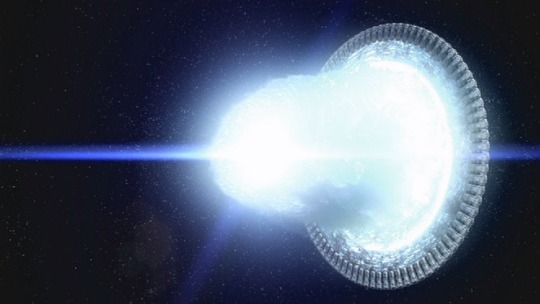
How many episodes pass the Bechdel test?
43.6% (ninety-two of two hundred and eleven).
What is the average percentage of female characters with names and lines for the full series?
23.23%
How many episodes have a cast that is at least 40% female?
Thirteen.
How many episodes have a cast that is at least 50% female?
Three.
How many episodes have a cast that is less than 20% female?
Seventy-two.
Positive Content Status:
Well, it’s altogether not impressive - on the plus side, the one (1) original female lead on the show is a legitimately great character and a strong feminist icon who has thus far withstood the test of time, but on the negative side, it’s fucking slim pickings for quality female representation beyond that one character. I’d also like the register my displeasure at all the times when the intense heteronormative male-obsessed writers room churned out content which was so rooted in straight-white-cis-male-Christian-American ideology as to be utterly absurd when applied to alien beings and cultures, but with zero evidence that anyone had reflected in the least on that fact. It’s science fiction, morons. Get a clue (average rating of 2.96).
Which season had the best representation statistics overall?
Season ten has to take it - as the only season with two women in the main cast, it passed the Bechdel 80% of the time (its closest competitor in that regard was season five at 54.54%, the only other season to even make it over 50%). Season ten also scored a 26.93% female cast, which is rubbish compared to most shows, but it’s the second-best score in that category for this show: the season which got the highest female percentage was season two, at just 27.5%. Seasons two and ten also tied for the lowest number of 20%-or-less episodes, and season two had three episodes at 40%+ and one at 50%+ (whereas ten had only the one 40%+, and no fifties), so weird as it seems, we gotta dive back into the nineties to claim season two as the runner-up for best overall statistics.
Which season had the worst representation statistics overall?
It’s a battle between seasons six to nine: season nine had the series-low for Bechdel passes (30%), and for the female cast (an abysmal 19.07%). However, season six barely did better on either score (though it was not second-worst - that was season eight, on both counts), and on the other hand, season six had a below-average positive content score, and the highest number of 20%-or-less episodes for a single season (twelve - though, season nine hardly did better, at eleven - tied with season seven, which also had a below-average positive content score, and only 20.53% for its female cast, which is the ‘best’ score of that latter cluster of seasons, but to such a negligible extent it’s hard to pretend it matters). The only thing in season nine’s favour, really, is that it didn’t tank its positive content score, but coming in at average isn’t exactly a ringing endorsement - it’s gotta take the prize for worst overall statistics, with seasons six, seven, and eight all jumbled in to second-worst, because the numbers are altogether just not that different from each other. It’s a sad showing.
Overall Series Quality:
If you can stomach the absolute overload of white dudes (both onscreen, and making their identities sooo fucking obvious all the way from the writer’s room), it’s...pretty delightful. They really don’t make exciting adventurous shows like this anymore, and more’s the pity, because sometimes the wonder of stepping through the ‘gate and discovering grand, varied, bizarre, and challenging new things on the other side is exactly what we need.
MORE INFO (and potential spoilers) under the cut:

Woof.
I did say, going in, that I did not expect this show to perform well, but that I was interested to see if maybe it’d do better than it appeared at first glance. It didn’t. Boy oh boy, it did NOT. As I have also said, as I’ve gone along, they increasingly surprised me in a bad way with their escalating inability to conceive of female characters, existing. I’ve said it before and I’ll say it again: they were better at being inclusive of women in the nineties. They weren’t necessarily good at handling those women in respectful or intelligent ways, but they bothered to remember them in a limited capacity, and that was...ok, it wasn’t much of anything. I’m not going to praise the early seasons for having better numbers than the later ones even though ALL of the numbers sucked, any more than I’m gonna praise season ten for pulling the least-crappy scores out when we all know that’s a direct consequence of having two women in the main cast, and nothing more substantive than that, no actual effort or attempt to be better was involved. Early on, I thought that the fact that the Powers That Be had allowed Samantha Carter to move beyond her uncomfortable written-by-men straw-feminist-caricature origins to become a person in her own right was a great positive sign for the future, but that turned out to be a misdiagnosis. Not of Carter - she’s fantastic - but a misdiagnosis of the creative team as men who were willing to learn and develop and expand their intensely narrow perspective. That never happened. These writers did not learn.

To put the numbers in some additional perspective, let’s look at what we got in terms of recurring characters: as established, we had just the one main female character for the entire duration of the series. Vala, our final-season addition (appearing in just shy of thirty episodes out of more than two hundred), was not the second-most prevalent female character on the show: that would be Janet Fraiser, who was killed off in season seven but who appeared in almost half the episodes up to that point (almost half to that point, not for the show in totality, mind). So, we have Carter in over two hundred episodes, Fraiser in less than eighty, and then Vala, in twenty-eight. There are ten male characters who appear in as many episodes as Vala or more - five who appear in over one hundred episodes. After Vala? The next most prominent female character is Carolyn Lam, Fraiser’s eventual replacement, in a measly eleven episodes. Considering the show ran for TWO HUNDRED and eleven (three of those being movie-length episodes, none of which featured any of the female characters mentioned other than Carter)...in at least as many episodes as Lam, we have an additional ten male characters, bringing us to TWENTY recurring males, and four female. Carter, Vala, and the two primary base doctors. That’s IT for recurring female characters who appeared in at least ten episodes of over two hundred. Male characters? Take your pick, we’ve got soldiers, scientists, politicians, aliens, villains and friends and ambiguous third parties on and off Earth, we have a bounty. We’ve got random extras with no story of their own who look exactly the same as all the other random extras (do I mean Reynolds, or Marks? Doesn’t matter, they’re both more prevalent than Lam). Want one more female character, to make it a top five? It’s Adria, who appears in six episodes exclusively in season ten (no wonder that’s the season with the best numbers). You get another thirteen male characters in the process, so we’re at thirty-three to five. You want a top ten for female characters, you gotta get all the way down to the ones who only appeared in three episodes, and it’s a joke to really call that ‘recurring’ on this scale. When I say this show had a male-dominated problem, I am not exaggerating.
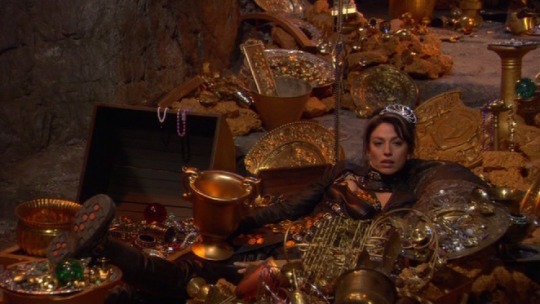
Where is the variety? You’re either a female lead (in which case, a primary part of your function is simply to BE female - and traditionally attractive - so that there’s some eye candy for the presumed straight-male audience), or you’re placed in the Compassionate Caregiver role as a doctor, or you...don’t exist. Certainly, you don’t exist in a way that sustains story for multiple episodes. As noted, if you’re a dude you don’t even NEED story, you can be a regular-recurring extra, but a woman? Forget about it. Even the female villains never last more than five episodes, if they manage that (the nameless Priors recurred more often than Adria did). And as the show wore on, episodes in which Carter was the ONLY woman became more and more frequent (until season ten, which just makes a big ol’ last-minute mess of the series-long trends). While this was good news in terms of having less sexy-lamp female guest characters popping in to single episodes to look pretty, be useless, and never appear again, it was bad news for women, existing in the narrative in any way, because evidently, these male writers struggled with the concept of women with actual functions. Even with such a variety of settings, a variety of planets and cultures and walks of life of all the dizzying kinds a person could think of (IT’S SCIENCE FICTION, MORONS), we still somehow get stuck with this itty little version of society that matches the comfortable white-Christian-American illusion of life that has been perpetuated blindly in television since its inception (pro tip: women existing in all different career paths and walks of life have been a thing since before tv shows were a thing). There’s more social variety on this planet in the real world, right now, but these dumb bastards couldn’t muster the effort to be creative with alien cultures. Hell, they failed to even be thoughtful or do basic research into historical social structures in order to reflect those in their transplanted-from-Earth-centuries-ago peoples (who had a lot of different ways of doing things, ya know?). And don’t even get me started on the gendered obsessions of genderless symbiotes...This show could be delightful and weird and wonderful with some of its ideas, but thoughtful, open-minded, PROGRESSIVE? Not at all. When you think about it, it’s actually quite alarming, just how reductive they could be. It’s like they made some minimal effort with Samantha Carter and then decided that’s it for anything or anyone who isn’t a straight-white-cis-Christian-American-man. Our work here is done.

Of course, I’m not inclined to give them credit for Samantha Carter anyway - as I noted back when I reviewed season one, credit goes to Amanda Tapping for sticking up for the integrity of a character who was originally written without any; just like the writers don’t get to take any of the credit for the work Christopher Judge did in making the Jaffa into less racist caricatures (including addressing the misogyny the writers had embedded in Jaffa warrior culture - bless you, Chris Judge), I am not going to pretend that Carter’s success as a feminist icon for the ages belongs to anyone but Amanda Tapping herself. A-Taps saved her character from the trash-heap of history to which she would have been relegated if she had continued in the model that the early episodes laid out, and whatever struggles she had behind the scenes with the kind of content she was handed (in particular I mean He Who Shall Not Be Named, Schmete Schmanahan), she never relaxed her grip on who Samantha Carter is, what she stands for, and what that means for the audience looking up to her. It’s a huge achievement, really, that despite the obvious brainless sexism of the writing staff, and despite the test of time which has claimed so many other nineties feminist icons as ‘good for the era, but actually incredibly problematic’ (we’re talking Dana Scully, Buffy, and their ilk), Carter is still pretty much unblemished; she’s close to a platonic ideal of her archetype. Again, I really don’t think it’s deliberate on behalf of the show-runners, and especially considering the rest of their atrocious track record with female characters it would be a mistake to suggest they actually knew what they were doing with Carter and/or that it mattered to them to make a truly strong female lead. If all they did was occasionally cave to Amanda Tapping when she told them to do better, well. They can have credit for not being too egotistical to listen, even though they failed to extend that ability to being basically receptive to the world outside that one interaction. Excuse me if I still think they’re fucking idiots. Because I do.

The thing about the closed-mindedness of the creative team on this show is that it translates into the storytelling in a very particular way: not just in the obvious sense (where only straight white American (*Canadian*) men are real people), but also in the context of the ethos of the show, the perspective. The characters learn and change as individuals, but the overarching attitude of the series does not develop in self-awareness to encompass the knowledge of the universe achieved by humanity at large, and that’s because, plainly, there is none. For all that the show deals in exploration, discovery, and advancement, these things are framed heavily as being scientific in nature, and just as the writers seem so confident that they know everything about the way the world works to the exclusion of even trying to understand the perspective of anyone different from them within their own culture, so the show itself never goes through self-reflection upon the America(n-military)-knows-best approach to interstellar exploration. While some early episodes - pretty much just in seasons one and two - toy with the idea that Earth knows little about the ways of the galaxy and we’re all ‘very young’, etc, there’s no development or change in approach over time which would be indicative of growth, and as the SGC garners more tech and allies and accelerates into scientific comprehension (largely applied through military enhancement, yay), questions about whether or not the gung-ho charge they lead into other worlds (sometimes with apocalyptic consequences) is really a good idea essentially dry up. There’s an overriding arrogance about this show that seems to be a by-product of that lack of self-reflection, the assumption that the audience will agree with whatever they see because, well, it seemed right to the creators and the fact that there might actually be more nuance to the issue never occurred to them. This can lead to some wild assertions and some truly shocking decision-making that is delivered straight-faced (season ten gave us the good guys committing genocide, in the name of the Ancients whom they uphold as a great species despite THEIR arrogant and terrible coloniser legacy throughout the universe, and somehow no one is troubled by any of that), and it’s a prime example of why an open-minded, considerate and understanding approach (and a diverse creative team to help facilitate that with their naturally different perspectives) is a really important thing in storytelling, even beyond the immediately obvious issue of representation: if everyone in the room has created an echo chamber of the same incredibly limited point of view, you lose the ability to recognise that alternate interpretations exist and that from some angles, what you’re making could be illogical, offensive, propagandistic, or evil.
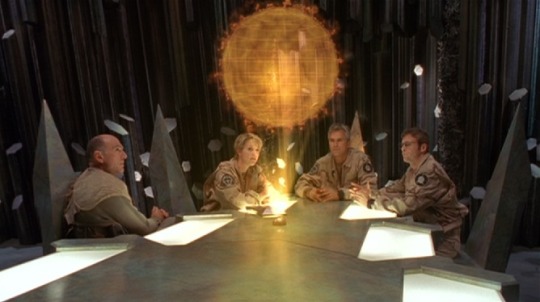
So, here we are. With me, wrapping this thing up with a reminder that despite just accusing the show of sometimes supporting evil ideologies through the blind ignorance of its self-absorbed show-runners, I actually really enjoy Stargate SG1 and will always hold a special place for it in my heart. On an entertainment level, it is pretty reliable, there are some duds in there for sure (some of them duds for various illogical, offensive, propagandistic, or evil reasons, some of them just fucking boring as Hell), but for the most part it’s solid, and sometimes it digs up a gem and really shines. Every virtue it has is a virtue that could be vastly improved upon (and every flaw is easily solvable with just a little bit of Goddamn thinking), and the full template is there, primed for a remake of the more inclusive sort, something that’ll play the game of alien cultural variance and the intrigue of Earth-based politics and the gravity and wonder of galactic exploration with the seriousness, creativity, and gusto that it all deserves. The heart and soul of SG1, what made it work for ten years and what makes it delightfully re-watchable despite being infuriating upon analysis, that core part of the story is pure. Damned if it doesn’t just need a broader, more considered take on that core, because it ain’t got a bless’d thing to do with being a straight-white-cis-Christian-American dude. That’s not how universality works.
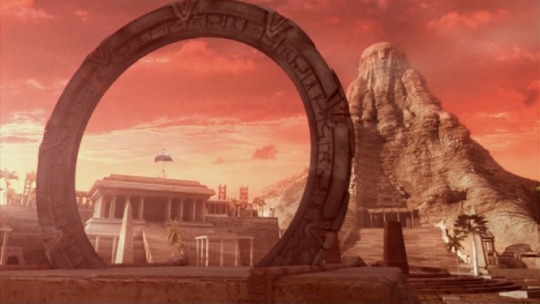
28 notes
·
View notes
Text
How much information can our brain store?
In 2016, Professor José A. Esteban gave the conference “ What are memories made of? And where are they kept? ”At the Achucarro Forum of the Basque Center for Neuroscience. In it, the CSIC biologist and researcher spoke about synaptic plasticity and the development of therapeutic applications for diseases such as Alzheimer’s. It has always been a curiosity that how much information can our brain store?
Thinking about the content of the talk, the first thing that came to mind were a couple of recent articles. On the one hand, the tweet from Vala Afshar, Chief Digital Evangelist at Salesforce.com, commenting on the Constellation Research study on the importance of Big Data, Analytics and Data Mining (again) at this moment in history in which 90% of the data in the world was created in the last year.
On the other hand, the creation by scientists from the University of Southampton in the United Kingdom of a new data format that, by storing information in crystal nanostructures, has achieved an expected life time of 13.8 billion years of expected survival for said support.
You don’t know where to store 360 terabytes of data and you may have to put it at 190º of temperature? No problem! We have the perfect hard drive for you thanks to a scientifically proven 5D storage technique. So I got to thinking, how much information can we remember? Will it be more or less than what can be generated in a lifetime? And what about the one that has been generated throughout history?
The information peta
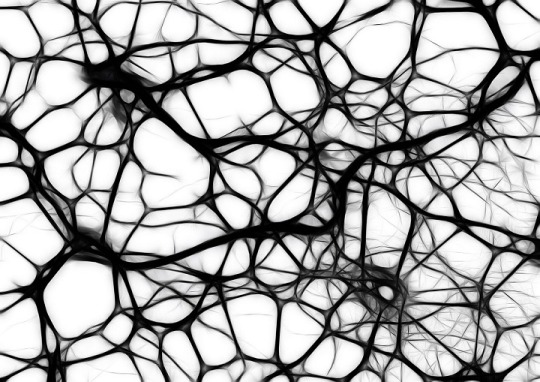
Information peta of our brain
To estimate how much information could be generated, nothing better to do this than to look for the leaders in information processing. In 2011 Eric Schmidt, CEO of Google, the company that wants to order the world’s information to make it accessible, said that humanity generated 5 exabytes of unique information every two days on the Internet .
What is that? Bernardo Hernández pointed out in these parts that it is as much information as from the beginning of history until 2003, all together, at the same time, without anesthesia. As there were people who did not quite square the figure, Science magazine decided to recalculate, concluding that we have generated about 600 exabytes up to 2011. And how much is an exabyte? Much.
1000 kilobytes = 1 Megabyte
1000 Megabytes = 1 Gigabyte
1000 Gigabytes = 1 Terabyte
1000 Terabytes = 1 Petabyte
1000 Petabytes = 1 Exabyte
1000 Exabytes = 1 Zettabyte
1000 Zettabytes = 1 Yottabyte
1000 Yottabytes = 1 Bronobyte
1000 Bronobyte = 1 Geopbyte
So of course, a skill that is becoming essential to survive in this modern environment is a hypertrophied memory, whatever they say. Therefore I needed to have an idea of our maximum capacity to memorize in order to determine if everything we generate fits or not.
Robert Birge , a professor and researcher at the University of Connecticut who analyzed the storage capacity of proteins, estimated it to be between 1 and 10 Terabytes in 1996, assuming that a neuron was a bit. Closer in time, in 2008, he considered in a radio interview that it could actually be something closer to 30 or 40 Terabytes , given that the brain does not store information in the same way as a computer.
In any case, it seems insufficient to reach our goal, so a solution must be found. On the one hand, it is hopeful to remember that the brain forgets things, leaving room for new memories. We all have things we want to forget (those over 40 years younger because there are no compromising photos of us on the Internet of when we were young, for no other reason). But it is also true that we could forget what we should not.
No, in these topics we better bet on the Diogenes syndrome of memories, we are not going to forget any important anniversary for our partner, such as his birthday or Valentine’s Day.
So we tried to keep asking to find out that depending on who we talk to we can reach the magic Petabyte number. The calculation in this case comes from estimating 100,000 million neurons with 1,000 synaptic connections each, taking each connection instead of each neuron for 1 bit.
The confirmation comes to us by a team of researchers from the Salk Institute led by Terry Sejnowski estimated in a paper published in eLife at the beginning of 2016 that it could be considered to go from tera to peta without problems since the synapses were not all the same, and that the different types could allow estimating up to 4.7 bits of information for each one .
What’s more, in some cases there is even talk of a maximum of 2.5 Petabytes . Paul Reber gives us an idea of the impact of this difference in capacity in an article in Scientific American .
In it, this professor of psychology at Northwestern University explained that this amount would allow 300 million hours of television to be stored . Of course, what he did not say is that it was not in HD, so I do not think that with that quality we can survive our challenge: 1 petabyte in HD quality is barely 13.3 years of video , very little if we are looking for true love and for all life.
An image and thousands of words

Digital Brain
I admit, this first approach is discouraging. It was urgent to find solutions. So my next step was to try to determine the maximum potential of our memory . If it was greater than the information generated we would still have a chance. We have already left behind the mistaken idea that we only use 10% of our brain, but it is still clear that we cannot use everything at once and that we have it quite underused.
How do you get to use it in such a way that it is possible to memorize everything you can memorize? The next one seemed obvious: we had to find the great memorizers of history , see what they were capable of and compare it with the limits.
Unfortunately, it seems that many of the best known cases of “infinite” memories were the result of trauma or unwanted situations and, what is worse, not easy to repeat without putting our integrity at risk to achieve it. An example of the risk we talked about was the old case of Cenn Fáelad mac Aillila , an Irish scholar who died in 679. Although what is called a scholar was actually scholar, it was not very scholarly. Come on, his thing was weapons and fighting.
Precisely in one of them he got a good wound on his head, which resulted in a wound that caused him pain all his life on the one hand, and an elephant memory on the other. What’s more, it is said that he did not manage to forget anything else during the rest of his existence. To understand the harsh implication of acquiring this superpower we must know that Cenn, after obtaining his new condition, completely changed his life to devote himself to poetry and learning Latin, instead of enjoying with friends from the “third time” after the battles .
Recent literature has also treated the subject with interest. Forges wrote about ” Funes the memorable ” telling in his collection of “Fictions”, back in 1944, the story of a man who suffers from hypermnesia after a common accident: a fall, in this case from a horse.
Curiously, his new gift is also associated with another headache, this time that of not being able to sleep (a big mistake, as we will see later). The absence of sleep and the premise that this process is a “memory eraser” means that the protagonist has, during his short life, a memory full of details but a total inability to think and make use of them. I was on the right track … well, you understand.
Closer in time was the case of Kim Peek , who inspired the character of Raymond Babbit in the movie “Rain Man.” Kim did not have any accidents during his life as his ability apparently originated before his birth. After Kim was born, the doctors told his parents that the child was not normal and that he would have mental retardation all his life, so they even recommended admitting him.
They refused to discover as he got older certain abilities that contrasted with the evident delay that he actually showed, as they had been diagnosed. Little Kim had been reading since he was 18 months old. Well, the reality is that he memorized the books his father read to him and he didn’t need to read them ever again to remember them. At the age of three he went to the dictionary, which he also memorized, to finish with what is estimated to have been around 9,000 books in his life.
As in the case described by Borges, his great memory and other abilities did not help him in his day-to-day life (coordination problems) or in analyzing or drawing conclusions. Apparently the reason for his ability would be related to the absence of a corpus callosum in his brain, causing his neurons to form a compact mass of connections that amplified his capacity, combined all this with an evident case of macrocephaly.
Kim’s father met Barry Morrow, the scriptwriter for the film “Rain Man,” at a conference in the State of Texas in 1984. The film introduced the “Sage Syndrome” or Savant into our lives, studied by Darold. Treffert. A “Savant”, or virtuoso of the arts in French, is a person who despite some physical, mental or other disability, possesses other skills that are normally developed at a much higher level.
It is associated with autism although it is estimated that less than 10% of autistics have abilities of this type . It is also estimated that half of the Savants are autistic, which does not help us much in our search (safe and without risk to our integrity) for an infinite memory. In a century of study, a maximum of one hundred people with this capacity are calculated. Treffet himself considers that less than 50 exist right now in the whole world with it. Other researchers, such as Snyder or Mottron and Dawson, tried to find the ability to induce skills, but without much success.
Looking for alternatives, I went to ” The Big Bang Theory” , which allowed me to remember that there is what is known as Hypertrophic Eidetic Memory or Photographic Memory. Yes, those people who remember everything, like Sheldon Cooper or Will Hunting. If they only remember things related to their own existence, we speak of a Highly Superior Autobiographical Memory (HSAM), of which it is estimated that 20 such people have been studied around the world (all in the USA). They are the “Google Humans” who suffer from hyperthymesia or excess memories. Unfortunately it is a quality that, coming as standard, can be lost if it is not diagnosed and worked on.
It appears suddenly and from that moment those who suffer from it begin to remember a large number of details of their day to day. In this case, Jill Price , who published a book about her case in 2008, can remember all the days of her life since she turned 14. Remember that at the age of 8, in 1974, you were beginning to be aware that something was not normal in your memory.
Unfortunately these people do not always have the ability to memorize anything, usually their memories are focused on aspects of their own life. They also do not use techniques or mnemonic rules that can be learned or replicated by others, or managed or improved. There are several recorded cases besides Jill Price (the long time patient AJ), all of them very similar.
For example Brad Williams, Rick Baron or Marilu Henner, star of a TV series in the US, which is the place of origin in most cases. The study of these patients by a team from the University of California at Irvine, led by Dr. Parker, has helped to better understand where and how data is stored in the brain.
It has not helped so much to the bearers of this gift, since as Jill herself has the negative part of spending much of her life in the past, of not being able to identify what each key is for , of suffering problems with recognition facial of people and also showing obsessive-compulsive tendencies.
Become a Foer
At this point on the road it seems that the alternatives to have a memory “in keeping with the times” were having an accident waiting for luck to smile on us, inducing a genetic or birth anomaly and little else. Is there no other way to get an elephant memory?
A journalist in the United States dedicated a year of his life to finding the solution to this problem. Our great man is Joshua Foer , who decided to leave everything to better know the people who were professionally dedicated to developing their memory, even training himself for the memory championships in the USA.
Without any prior knowledge of the subject, or special ability, or natural genetics, he won the championship in 2006. He ended up writing his experience in a book, ” The challenges of memory ” can be found in Spanish, “Moonwalking with Einstein : the art and science of remembering everything ”in English. Joshua also gives TED talks explaining how “normal people” can expand their retention capacity.
One of his first discoveries was the millenary mnemonic techniques , such as the palaces of memory. Aristotle spoke already in his time of places where we were able to store content to be remembered. The thing did not remain in the past: the ars memorativa was discussed and studied in classical sources or medieval studies. Saint Augustine wrote profusely about memory in his “Confessions”, in fact the term appears about 100 times, and also refers to a place where we can access and where memories are kept.
Frances Yates in her book “The Art of Memory” (1969) confirmed how the ancient Greeks and Romans used a technique based on prior memorization of the arrangement of everything in a room or building. Joshua Foer includes in his the story of the Greek Simonides of Ceos, who was enjoying a banquet with friends in the 5th century BC when everything collapsed around him, most of those present perishing.
A survivor of the catastrophe, he suddenly became a history of memory when, abstracting from what happened and taking as a reference the columns, tables and general arrangement of the room, he managed to lead the relatives of the deceased by the hand to tell them where they were at the moment that everything changed in their lives. Joshua and the legend say that at that moment, with this practical demonstration of the Simónides technique, the study of memory began its official journey.
This is how the idea of using a physical “place” as a reference is the basis of this mnemonic technique known as the Loci Method (plural of the Latin term “locus” or location, location). We first memorize a “container”, a reference, for example using a building or a house, ultimately a place we know; we can even create one from scratch. Once it is developed, we design routes through it, to also have an order, a sequence that we will follow to move through it and that will act as a common thread, turning a complex task into a pleasant walk.
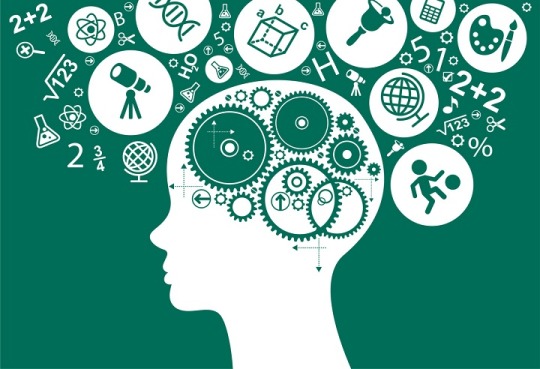
Information stored in Brain
In this way we solve two important problems: remembering things that the brain has trouble remembering naturally, and remembering them in context even when they do not have them per se. The idea, later copied by communications engineers, of using a “carrier” of the message, which facilitates its transport and storage, is as old as our culture. Greeks and Romans in their ancient rhetorical treatises, such as the ” Rhetorica ad Herennium “, the oldest surviving book of rhetoric in Latin to this day (originating from the year 90 BC), already spoke of the places to store things in our memory.
Problem solved … for now
At this point part of the problem seemed solved. We could not confirm if the brain could remember all the information that is generated, but we did know that there were people who remembered everything , and that following Foer’s instructions, anyone could learn to memorize a large amount of important information, such as the dates essential to survive in a modern couple relationship. And after all, if Foer, a journalist, had been able to do it, anyone should be able to be.
The post How much information can our brain store? appeared first on Technoeager- tech blogs and articles.
from WordPress https://ift.tt/3fFkVmO
via IFTTT
0 notes